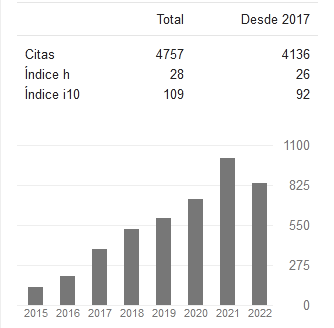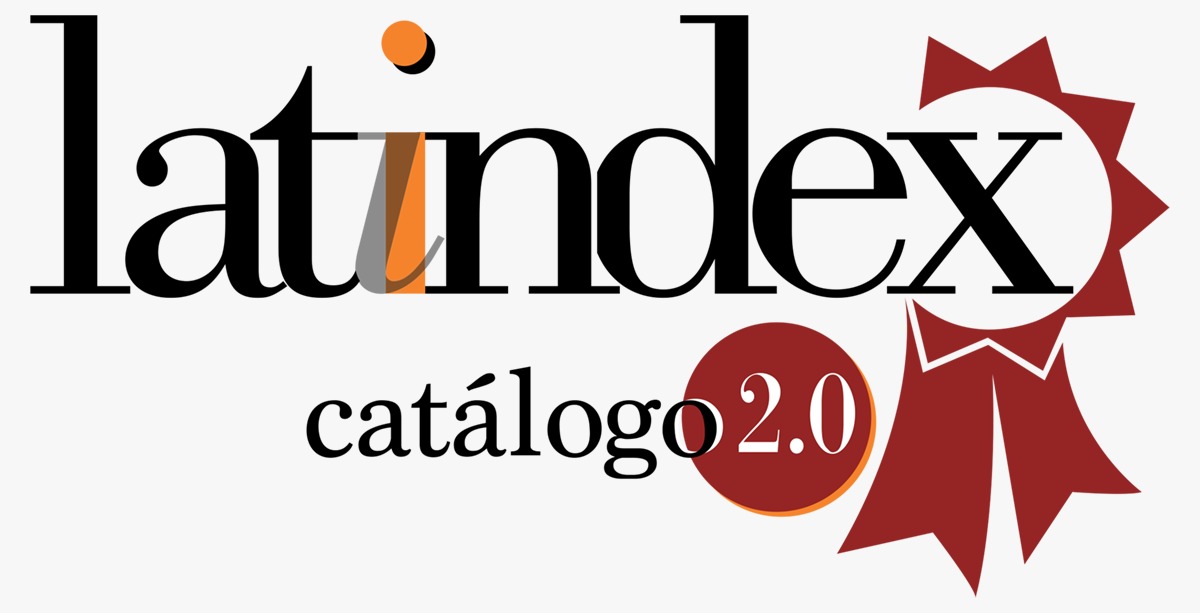BRECHA SEGÚN EL MODELO SERVQUAL ENTRE LAS EXPECTATIVAS Y LAS PERCEPCIONES DE LOS ESTUDIANTES CON RESPECTO A LOS SERVICIOS EDUCATIVOS EN LA UNIVERSIDAD NACIONAL DE CHIMBORAZO
Palabras clave:
Calidad; Satisfacción; Modelo SERVQUAL.Resumen
El conocimiento de las opiniones de los estudiantes sobre los diversos aspectosde la capacitación proporcionada es un factor esencial para evaluar la calidad de la educación. El objetivo de este estudio fue determinar la brecha entre las expectativas de los estudiantes y las percepciones de los servicios educativos que se les brinda en la Universidad Nacional de Chimborazo. Se realizó un estudio de tipo transversal, y se seleccionaron a 320 estudiantes a través del muestreo aleatorio estratificado. Los datos fueron recopilados mediante el cuestionario SERVQUAL para examinar las áreas de seguridad, receptividad, empatía, elementos tangibles y confianza. Se utilizó la estadística descriptiva (frecuencia, porcentaje, media ± DE) y analítica (prueba t comparada, prueba-T independiente y ANOVA de una vía) en SPSS 20. Los puntajes promedio de las expectativas y percepciones de los estudiantes sobre los servicios educativos que se les entregaron fueron 4.34 ± 0.63 y 3.56 ± 0.68, respectivamente, con una brecha significativa, negativa (-0.77 ± 0.77, p <0.001). La menor brecha de calidad se obtuvo para la seguridad (-0,65) seguida de la confiabilidad (-0,69), la responsabilidad (-0,74) y la empatía (-0,81) y la mayor brecha observada en los elementos tangibles (-0,96) Se observó una brecha negativa entre las expectativas de los estudiantes y las percepciones sobre la calidad de los servicios educativos que se les brindan. Esto significa que la calidad de los servicios entregados a los estudiantes fue menor de lo que esperaba. La brecha más alta estuvo relacionada con los tangibles. Para mejorar los servicios educativos, es necesario prestar atención a las diferentes áreas de calidad de los servicios educativos, especialmente los tangibles.
Descargas
Citas
Abbasian M, Chaman R, Mousavi S, Amiri M, Taromsar MG, Maleki F, et al. Gap
analysis between students' perceptions and expectations of quality of educational
services using Servqual model. Qom Uni Med Sci J. 2013;7(2): 2-9.
Aghamolaei T, Eftekhaari TE, Rafati S, Kahnouji K, Ahangari S, Shahrzad ME, et
al.service quality assessment of a referral hospital in southern Iran with SERVQUAL
technique: patients' perspective. BMC Health Serv Res. 2014; 14:322.
Al Qahtani S. Students' knowledge of, and attitudes toward, mentoring: a case study at
the Master's Program in Health and Hospital Administration. Adv Med EducPract.
; 6:149-52.
Al-Momani MM. Gap Analysis between perceptions and expectations of medicalsurgical
patients in a public hospital in Saudi Arabia. Med PrincPract. 2016; 25(1):79-
Danaei SM, Mazareie E, Hosseininezhad S, Nili M. Evaluating the clinical quality of
departments as viewed by juniors and seniors of Shiraz dental school. J Educ Health
Promot. 2015; 4:75.
Fiedler R, Degenhardt M, Engstrom JL. Systematic preparation for teaching in a
nursing doctor of philosophy program. J Prof Nurs. 2015; 31(4):305-10.
Gorji H, Tabatabaei S, Akbari A, Sarkhosh S, Khorasan S. Using the service quality
gap's model (SERVQUAL) in Imam Khomeini teaching hospital: 2012. Journal of
Health Administration (JHA). 2013; 16(5):7-18.
Kebriaei A, Akbari F. Quality gap of educational services at Zahedan University of
Medical Sciences, Iran. Bangladesh Med Res Counc Bull. 2008; 34(3):76-80.
Lim PC, Tang NK. A study of patients’ expectations and satisfaction in Singapore
hospitals. Int J Health Care Qual Assur IncLeadersh Health Serv. 2000; 13(6– 7):290–
Mohammadnia M, Delgoshaei B, Tofighi S, Riahi L, Omrani A. Survey on nursing
service quality by SERVQUAL at Tehran social security organization hospitals.
Hospital. 2010; 8(3):68–73.
Mostafa MM. An empirical study of patients’ expectations and satisfactions in
Egyptian hospitals. Int J Health Care Qual Assur IncLeadersh Health Serv. 2005;
(7):516–32.
Mukhopadhyay DK. Students' perception of quality of medical education in a medical
college in west Bengal, India. Indian J Public Health. 2016; 60(1):4-9.
Nabilou B, Khorasani-Zavareh D. The bridge between real and ideal: students
perception on quality gap in reality and their educational expectations. Iran Red
Crescent Med J. 2014; 16(9):e14254
Nadi A, Shojaee J, Abedi G, Siamian H, Abedini E, Rostami F. Patients' expectations
and perceptions of service quality in the selected hospitals. Med Arch. 2016; 70(2):135-
Nekoei-Moghadam M, Amiresmaili M. Hospital services quality assessment hospitals of
Kerman University of Medical Sciences, as a tangible example of a developing country.
Int J Health Care Qual Assur. 2011; 24(1):57-66.
Petruzzellis L, D'Uggento AM, Romanazzi S. Student satisfaction and quality of service
in Italian universities. ManagServ Qual. 2006; 16(4):349-64.
Rahim Khanli M, Daneshmandi H, Choobineh A. The students' viewpoint on the
quality gap in educational services. J Adv Med Educ Prof. 2014; 2(3):114-19.
RanjbarEzzatabadi M, Bahrami MA, ZareAhmadabadi H, Nasiri S, Arab M, Hadizadeh
F, et al. Gap analysis between perceptions and expectations of service recipients
through Servqual approach in Yazd, Afshar Hospital. TolooeBehdasht. 2010; 9(2,
:75–86.
Reuterswärd M, Hylander I. Shared responsibility: school nurses' experience of
collaborating in school-based interprofessional teams. Scand J Caring Sci. 2016.
Rezaei S, Matin BK, Moradi K, Bijan B, Fallahi M, Shokati B, et al. Measurement of
Quality of Educational Hospital Services by the SERVQUAL Model: The Iranian
Patients' Perspective. Electronic Physician. 2016; 8(3):2101-06.
Sabahi-Bidgoli M, Mousavi SGA, Kebriaei A, Seyyedi SH, Shahri S, Atharizadeh M. The
quality of hospital services in Kashan educational hospitals during 2008-9: the
patients' viewpoint. KAUMS Journal (FEYZ). 2011; 15(2):146-52.
Shams A, Yarmohammadian MH, AbbarikHH.Determination of rate of customer focus
in educational programs at Isfahan University of Medical Sciences(1) based on
students' viewpoints. J Educ Health Promot. 2012; 1:24.
Snelgrove H, Familiari G, Gallo P, Gaudio E, Lenzi A, Ziparo V, et al. The challenge of
reform: 10 years of curricula change in Italian medical schools. Med Teach. 2009;
(12):1047-55.
Ujiie Y, Okada H. Factors affecting the use of complementary and alternative medicine
among Japanese university students. J Complement Integr Med. 2015; 12(1):89-94.
Yazdi NA, Ganjouyi FA, Pouyanfard A. Evaluation of the quality of educational services
in the physical education faculties of Islamic Azad universities from the viewpoint of
students. Eur J Exp Biol. 2013; 3(1):166–73.
Descargas
Publicado
Cómo citar
Número
Sección
Licencia
Derechos de autor 2020 René Basantes Avalos, Alexander Vinueza Jara, Jhonny Mauricio Coronel Sánchez, Eduardo Davalos Mayorga, Gloria Elizabeth Miño Cascante

Esta obra está bajo una licencia internacional Creative Commons Atribución 4.0.
Usted es libre de:
- Compartir — copiar y redistribuir el material en cualquier medio o formato
- Adaptar — remezclar, transformar y construir a partir del material para cualquier propósito, incluso comercialmente.
Bajo los siguientes términos:
- Atribución — Usted debe dar crédito de manera adecuada, brindar un enlace a la licencia, e indicar si se han realizado cambios. Puede hacerlo en cualquier forma razonable, pero no de forma tal que sugiera que usted o su uso tienen el apoyo de la licenciante.
- No hay restricciones adicionales — No puede aplicar términos legales ni medidas tecnológicas que restrinjan legalmente a otras a hacer cualquier uso permitido por la licencia.













































